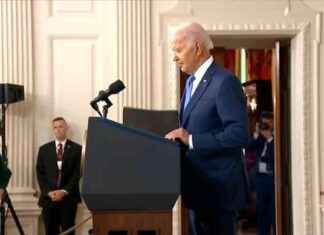Despite being an August heatwave afternoon in the middle of May, the high school public approached the Ramblas theater with commendable militancy to attend the artistic milestone of the season. William Kentridge made his debut with his total art in this center of the arts that wants to be the Gran Teatre, and he did it with the famous show by Wozzeck that came to light in Salzburg five years ago.
The expressionist work that Alban Berg composed with unclassifiable modernity between 1914 and 1922, the years of the Great War, based on the homonymous play by Georg Büchner, served the Johannesburg artist to reflect both on the set –a motley set of wood dilapidated and unstable ramps – as with his classic animated films and carbon sketches projected on stage, that already well-known world of destruction and industrialized carnage.
It is not the type of pleasure that one is looking for in the Liceu on a summer afternoon. But its bleak aesthetic reflects nothing more than honesty. Kentridge couldn’t be more truthful in showing the characters on the edge: he doesn’t even glorify them. What differentiates soldier Wozzeck, futilely tortured by the infidelity of his partner, from that corpse that still opens one eye in the mud of the trench? What is Marie’s corpse at the hands of Wozzeck if not part of a warlike barbarity that flies over her distressing reality?
And the mistreatment to which the captain and that mengele subject the protagonist, perhaps an echo of that mutilated young man who recurrently appears on the scene and who turns his crutch into a rifle and the rifle into a flute… Wire fences, gas masks… and a battle map with Ypres, which was one of the most battered sites. Not surprisingly, Luc de Wit, Kentridge’s assistant director, is Belgian.
The famous South African artist turns the scene into an overwhelming mélange of inputs, each one more scorching. The visual density is unusual in an opera, in which text and music also claim their own.
“It has fascinated me, it is to see it at least a couple of times, there is so much to discover, although in the end I expected something less repetitive and in keeping with the music”, said a woman at the end of the opera.
Kentridge had come onstage to say hello. And after the applause that the public had dedicated to the baritone Matthias Goerne, whose vocal proportion was worthy of the expert in lieder that he is, and after the warmth with which the soprano Annemarie Kremer was received, the acclaim for the artist for his staging was completely accurate. There were seven minutes of applause in total, with an exultant maestro Josep Pons and an orchestra and choir in total harmony.
4








